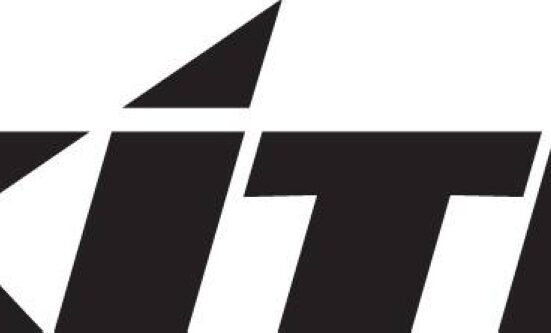What Are Current Assets?
The current assets account is a balance sheet line item that’s listed under the Assets section which accounts for all company-owned assets that can be converted to cash within one year. Assets with values that are recorded in the current assets account are considered to be current assets.
Current assets include cash, cash equivalents, accounts receivable, stock inventory, marketable securities, and prepaid liabilities. Current assets are sometimes referred to as current accounts.
Key Takeaways:
- Current assets is an account listed on a balance sheet that shows the value of the assets owned by a company.
- These assets can be converted to cash through liquidation, use, or sales within one year.
- Current assets include cash, cash equivalents, accounts receivable, stock inventory, marketable securities, and prepaid liabilities.
- The current assets account is important because it demonstrates a company’s short-term liquidity and ability to pay its short-term obligations.
Investopedia / Matthew Collins
How Current Assets Work
Publicly owned companies must adhere to generally accepted accounting principles (GAAP) and reporting procedures. Financial statements must be generated with specific line items that create transparency for interested parties. One of these statements is the balance sheet which lists a company’s assets, liabilities, and shareholders’ equity.
Current assets are always located in the first account listed on a company’s balance sheet under the assets section. It consists of sub-accounts that make up the current assets account. Apple, Inc. lists several sub-accounts under current assets that combine to make up total current assets. This is the value of all current assets sub-accounts.
This section is important for investors because it shows the company’s short-term liquidity. According to Apple’s balance sheet for fiscal year 2023, Apple had $143 million in the current assets account that it could convert to cash within one year according to its balance sheet for fiscal year 2023. This short-term liquidity is vital. Apple could liquidate these assets to help cover its debts if it were to experience issues paying its short-term obligations.
Current assets can range from barrels of crude oil, fabricated goods, inventory for works in progress, raw materials, or foreign currency depending on the nature of the business and the products it markets.
Types of Current Assets
Many assets are considered current by businesses throughout all industries. Most industries group their current assets into these sub-accounts but you might see others:
- Cash and cash equivalents
- Marketable securities
- Accounts receivable
- Inventory
- Prepaid liabilities/expenses
- Other short-term investments
The current asset sub-accounts are normally displayed on the balance sheet in order of current asset liquidity. Those that are most easily converted into cash are ranked higher by the finance division or accounting firm that prepared the report. The order in which these accounts appear might vary because each business can account for the included assets differently.
Cash and Cash Equivalents
Assets in the current assets account are cash or can be converted to cash quickly. Cash equivalents include certificates of deposit, money market funds, short-term government bonds, and treasury bills.
These items must not have any restrictions that inhibit their short-term liquidity
Marketable Securities
The total value of liquid investments that can be quickly converted to cash without reducing their market value is entered into the marketable securities account. It may not be possible to convert them to cash without impacting their market value if shares in a company trade in very low volumes. These shares wouldn’t be considered liquid and would therefore not have their value entered into the current assets account.
Accounts Receivable
Accounts receivable is the value of all money that’s due to a company for goods or services delivered or used but not yet paid for by customers. It’s entered in current assets provided that the accounts can be expected to be paid within one year. Some of its receivables might not be included in the current assets account if a business makes sales by offering longer credit terms to its customers.
Important
It’s entered as a bad debt expense and not included in the current assets account if an account is never collected.
It’s also possible that some receivables aren’t expected to be collected. This consideration is reflected in the allowance for doubtful accounts, a sub-account whose value is subtracted from the accounts receivable account.
Inventory
Inventory represents raw materials, components, and finished products. It’s included in the current assets account. Different accounting methods can adjust inventory, however. It may not always be as liquid as other qualified current assets depending on the product and the industry sector.
There’s little or no guarantee that a dozen units of high-cost heavy earth-moving equipment might be sold over the next year. There’s a relatively high chance of a successful sale of a thousand umbrellas in the coming rainy season, however.
You should view inventory with a skeptical eye for these reasons. Read through the company reports or browse the internet to determine what’s going on with a company’s inventory. It might be standard practice or a trend in the industry for inventory to be at specific levels.
Inventory also blocks working capital. It can become backlogged if demand shifts unexpectedly. This is more common in some industries than in others.
Prepaid Liabilities
Prepaid expenses represent advance payments made by a company for goods and services to be received in the future. They’re considered current assets. They can’t be converted into cash but they’re payments that have already been made and they free up capital for other uses. Prepaid expenses might include payments to insurance companies or contractors.
Other Short-term Investments
Many companies categorize liquid investments in the marketable securities account but some can be accounted for in the other short-term Investments account. Excess funds invested in a short-term security would put the funds to work but maintain the option of accessing them if necessary.
Current Assets vs. Noncurrent Assets
Non-current assets are those that can’t be converted within one year. You might find some of the same asset accounts under current assets and noncurrent assets on a balance sheet because those same types of assets might be tied up for a longer period. They might include a marketable security that can’t be sold in one year or that would be sold for much less than its purchase price.
Property, plants, buildings, facilities, and equipment are all examples of non-current assets because they can take a significant amount of time to sell. Non-current assets are also valued at their purchase price because they’re held for longer times and they depreciate. Current assets are valued at fair market value and they don’t depreciate.
Formula for Current Assets
The total current assets formulation is a simple summation of all assets that can be converted to cash within one year. You can add it to other liquid assets if a current asset subcategory isn’t listed in this formula. Gather the current asset information from a balance sheet and add it. It’s typically already totaled for you on the balance sheet under total current assets:
Current Assets = C + CE + I + AR + MS + PE + OLAwhere:C = CashCE = Cash EquivalentsI = InventoryAR = Accounts ReceivableMS = Marketable SecuritiesPE = Prepaid ExpensesOLA = Other Liquid Assets
Real-World Example
Leading retailer Walmart Inc.’s (WMT) total current assets for the 2024 fiscal year was $76.9 billion:
- Cash and short-term investments: $9.9 billion
- Total accounts receivable: $9.0 billion
- Inventory: $54.9 billion
- Other current assets: $3.3 billion
Microsoft Corp.’s (MSFT) total current assets for FY 2023 was $184.3 billion:
- Cash and short-term investments: $111.3 billion
- Total accounts receivable: $48.7 billion
- Inventory: $2.5 billion
- Other current assets: $21.8 billion
Financial Ratios That Use Current Assets
These ratios are commonly used to measure a company’s liquidity position. Each uses different current assets sub-accounts compared to the value of a company’s current liabilities account:
- The current ratio measures a company’s ability to pay its short-term obligations and considers a company’s total current assets relative to the current liabilities account, the value of debts that come due within one year.
- The quick ratio measures a company’s ability to meet its short-term obligations with its most liquid assets. It divides the value of the cash and cash equivalents account, the marketable securities account, and the accounts receivable account by the value of the current liabilities account. Inventory is excluded from this calculation because inventory liquidity can vary.
- The cash ratio measures the ability of a company to pay off all its short-term liabilities immediately using cash. It’s calculated by dividing the value of the cash and cash equivalents account by the value of the current liabilities account.
The cash ratio is the most conservative because it considers only cash and cash equivalents. The current ratio is the most accommodating and includes various assets from the current assets account. These multiple measures assess the company’s ability to pay outstanding debts and cover liabilities and expenses without liquidating its fixed assets.
How Do Investors Use Current Assets?
The total current assets figure is of prime importance regarding the daily operations of a business. Management must have the necessary cash as payments toward bills and loans come due. The dollar value represented by the total current assets figure reflects the company’s cash and liquidity position. It allows management to reallocate and liquidate assets if necessary to continue business operations.
Creditors and investors keep a close eye on the current assets account to assess whether a business is capable of paying its obligations. Many use a variety of liquidity ratios representing a class of financial metrics used to determine a debtor’s ability to pay off current debt obligations without raising additional funds.
What Are Some Examples of Current Assets?
The current assets account can be found on a firm’s balance sheet. Common examples of current assets accounts include:
- The cash and cash equivalents account: These include cash accounts, money markets, and certificates of deposit (CDs).
- The marketable securities account: These could be equity (stocks) or debt securities (bonds) that are listed on exchanges and sold through a broker.
- The accounts receivable account: This is money that’s owed to the company for selling their products and services to their customers
- The inventory account: These are goods that have been produced and are ready for sale or raw materials.
- The prepaid expenses account: These include goods or services that have been paid for and are expected to be received shortly.
What Are 3 Common Types of Current Assets?
Three types of current asset accounts that commonly appear are cash and cash equivalents, marketable securities, and prepaid expenses.
The Bottom Line
Current assets are any that a company can convert to cash within a short time, usually one year. They’re listed in the current assets account on a publicly traded company’s balance sheet.
The assets that are considered current can vary by industry but they generally fall into these sub-accounts: cash and cash equivalents, marketable securities, accounts receivable, inventory, and other liquid assets.







